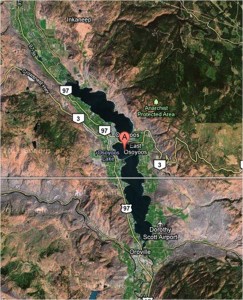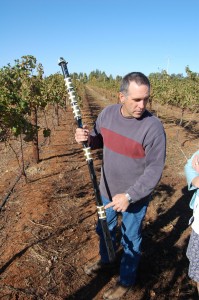“As I looked down, I saw a large river meandering slowly along for miles, passing from one country to another without stopping. I also saw huge forests, extending along several borders. And I watched the extent of one ocean touch the shores of separate continents. Two words leaped to mind as I looked down on all this: commonality and interdependence. We are one world.” – John-David Bartoe, astronaut
The one time I went to a reunion with my grandmother, I couldn’t get over how much these new-found relatives looked just like me (big smiles, round faces). My family had doubled in size overnight. That’s the feeling I had this week at the bi-national Osoyoos Lake Water Science Forum. Our Canadian maps may stop at the 49thparallel, but the basin continues south and includes a larger watershed family. If we are going to use the slogan, “One Valley, One Water,” we have to think bigger.

Osoyoos Lake from space, where the distinctions blur between where one jurisdiction begins and another ends.
Alex Louie, who filmed the proceedings for the Osoyoos Indian Band, reminded the group that from the indigenous point of view, the international border doesn’t exist. The Colville Confederated Tribes are the same people as the Okanagan Nation. Looking around the room, you could mostly say the same about the residents of Oroville and Osoyoos (the U.S. and Canadian towns along the lakeshore), or even the visiting university and agency people – shared values, shared backgrounds, shared interests.
There’s no question that Osoyoos Lake will be healthier if we can take a common, ecosystem-based approach to water quality and water supply problems. Lake levels, flow rates, watermilfoil control, shoreline access and zoning all lend themselves to collaborative processes. On the other hand, we can’t just throw nationhood and politics out the window.
Water (ironically enough) is a highly inflammatory issue. Continue reading →










